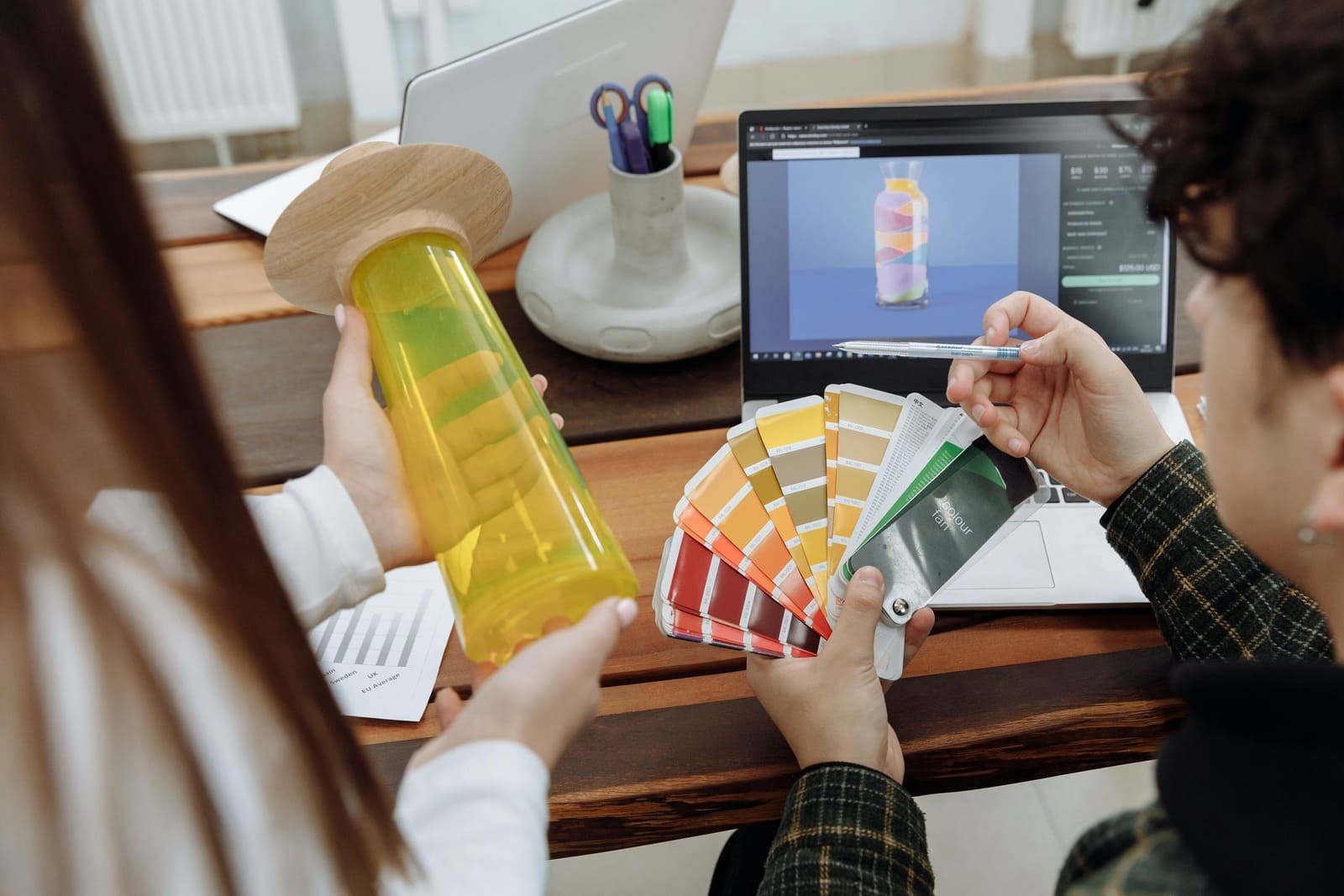Blog

How to Choose the Right Logo for Your Online Portfolio
Visual artists such as photographers, painters, or graphic designers are perhaps the most commonly associated occupations for needing strong online portfolios. However, a vast number of other professions benefit from these digital demonstrations of skill and experience, too. Writers, coders, architects, and even marketing professionals can all use online portfolios to showcase their professional skills and present a clear brand identity to prospective clients.
But creating a strong online portfolio starts with a strong logo, and we’re going to show you how to create one.
Why You Need A Strong Logo
Headlining your online portfolio with a unique and attractive logo makes your digital presence more memorable, so it adds weight to your marketing strategy. The more memorable your logo is, the better the impression you’ll make on prospective clients, and the more likely they are to remember you when they need your services.
A good logo also inspires confidence and trust and adds a feeling of professionalism to your brand. Even freelancers or solo entrepreneurs benefit from having a visual identity of some sort, and a logo is part of this.
So, how do you choose the right logo for your online portfolio? There are a couple of tips and tricks every ambitious professional can use to make their mark in the world of internet networking.
Get to know yourself first
One of the first steps you can take towards creating a stand-out logo for your online portfolio is to think about what part of your personal brand you’d like to showcase the most. You can develop a clearer idea of what that is by asking yourself the following questions:
- What is the purpose of my profession/brand?
- Who is my target audience?
- When I distill it, what is the core of the services I offer?
- What separates me from my competition?
A good logo should speak for itself. It should have a clear visual message and be able to communicate to viewers who you are as a brand and what they can expect from hiring you for your services. The more professional “soul” searching you do, the easier it’ll be to narrow this down.
Make a vision or mood board
If you’re a visual learner or are struggling to create a clear vision for what you want your logo to look like, it can be useful to gather inspiration by creating a vision or mood board about your brand.
Platforms like Pinterest, Dribbble, and Behance are all excellent places to browse and save ideas that excite you. Once you have an album filled with examples and visual references for the direction you want to take your logo design, the process of choosing it can feel a lot simpler!
Develop an understanding of color theory
Color plays a powerful role in brand perception and visual perception in general. If you're stuck on how to choose the right logo, leaning into your color theory knowledge can be extremely useful.
In the world of color theory and color psychology, every shade denotes a different feeling or association. By choosing the right color, you can communicate the values of your brand to viewers in a much more instinctive and effective way. Let’s take a look at some common color associations:
Red: passionate, powerful, energetic
Yellow: cheerful, mellow, fun
Green: growth, nature, inspiration
Blue: trustworthiness, communication, calmness
Purple: mystery, spirituality, sensuality
Black: sophistication, professionalism, seriousness
White: purity, neutrality, tranquility
If you feel a little lost when it comes to color theory, don’t stress. It’s much simpler than it may initially seem. Even using the above associations as a reference can help you identify an online portfolio logo that perfectly suits the tone and visual messaging of your brand.

Use a custom font and typeface
You can bolster the individuality and memorability of your online portfolio’s logo by selecting a custom font and typeface. This is a choice that will automatically set you apart from your competitors.
A unique font can supplement your choice of portfolio logo by adding weight to its visual impact and aesthetic. Make sure you choose something that accurately reflects the nature of your brand and balances out your logo in an appealing way.
KISS (Keep It Simple, Stupid)
When it comes to creating a strong logo, simple is almost always better. Overcomplication not only shows indecisiveness and a lack of attention to detail—neither of which is ideal for an online portfolio—but it also contributes to a messy visual appearance that can be off-putting to look at.
Instead of cramming lots of different details, patterns, or colors into your logo, choose one that distills the essence of your brand in a clear and simple way. The less busy your logo is, the easier it will be on the eyes and the more visual space your actual portfolio can comfortably occupy on the page.
Get feedback from peers or mentors
Sometimes, when you work on one project for too long, your perception of it can get obscured, and that’s when the opinions of those you trust can come in handy. Even if you’re a designer, artist, or product photographer building your own portfolio, it’s always a good idea to get feedback from other people, and not just those in the creative industry.
Talk to friends, peers, family members, or mentors whose opinions you value, and find out what their honest responses are. You might gain some valuable insights about how to improve your decision.
Use free logo-making software
Choosing the right logo for your online portfolio can be challenging, especially if you have minimal practical design skills. Fortunately, online software can streamline and simplify the process dramatically.
FLD’s Free Logo Maker makes it easy to create a professional logo that embodies your skills, brand, and professional identity perfectly. Not only does it make it easier to create a professional logo, but it also doesn't cost you a cent, so it offers a huge ROI.
Make Your Portfolio Stand Out
A strong logo can improve the aesthetic and overall sense of completion people feel when perusing your online portfolio. It makes you look more professional, enhances your digital presence, and shows that you are willing to go the extra mile for the sake of prime presentation.
By developing a deeper understanding of your craft, learning about color theory and shape language, getting feedback, and utilizing quality logo-making software, you can create and choose a logo for your online portfolio that is both striking and industry-applicable.
More tips and tricks on the blog


